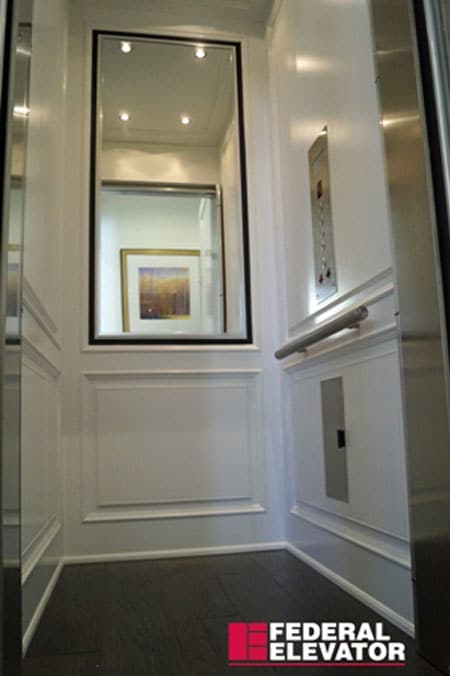If you’re planning a new home or remodeling an existing home, the cost of installing an elevator is something to consider. Building an elevator into the design of a new home offers several cost-saving options, whereas retrofitting an elevator in an existing home can be more costly and complex. Let’s take a closer look at both options.
Adding an Elevator During Construction of a New Home
When adding an elevator to your plans during construction of a new home, it is very practical to include the space required for the shaft for the elevator company to install your residential elevator. You will also need a small area to accommodate equipment for elevator, most efficient is to include it at lowest landing near the elevator shaft. Even if you don’t need the elevator now, you can plan for it in future so area is ready for future installation. Design in stacked closets on all the levels of the home. You should also include an 8” pit minimum on the lowest landing. You can cover it with a false floor until you are ready to install elevator. Designing this into the plans allows for future installation of the lift system if ever needed without having to make any major changes or additions to your home. This option can save significantly on installation costs as you are not subject to extra charges related to moving electrical and plumbing systems that may be in place in the hoistway area. You still will have to go through a little construction to prepare the shaft for the elevator. Doors and floors of the area must be removed. This work is not provided by the elevator company, you need to engage a general contractor.
Retrofitting an Existing Home With An Elevator
Cost savings associated with retrofitting an existing home with an elevator are not as great as those associated with building one into your initial plans for a new build. Retrofitting requires pit and shaft construction, heating and cooling protection for any additional extension space that needs to be built, plus possible permit fees and charges related to moving existing electrical and plumbing systems in order to accommodate the new hoistway space needed for installation of the lift system. This type of project could end up being three times more expensive than simply buying the elevator itself. It may still be less than the cost of moving to a home that has an elevator. It is important to know that it is possible to do, but much more costly.
Conclusion
Adding an elevator when building or remodeling your home requires careful consideration of both short-term and long-term needs. We understand that installing a residential elevator system is no small feat, which is why we are here to help you weigh all options before making a final decision that best suits your lifestyle. Whether you’re looking at adding one during construction or retrofitting it into an existing structure, we’re here to answer all questions and guide you through every stage of this process! Email sales@federalelevator.com to get connected to a home elevator specialist.



